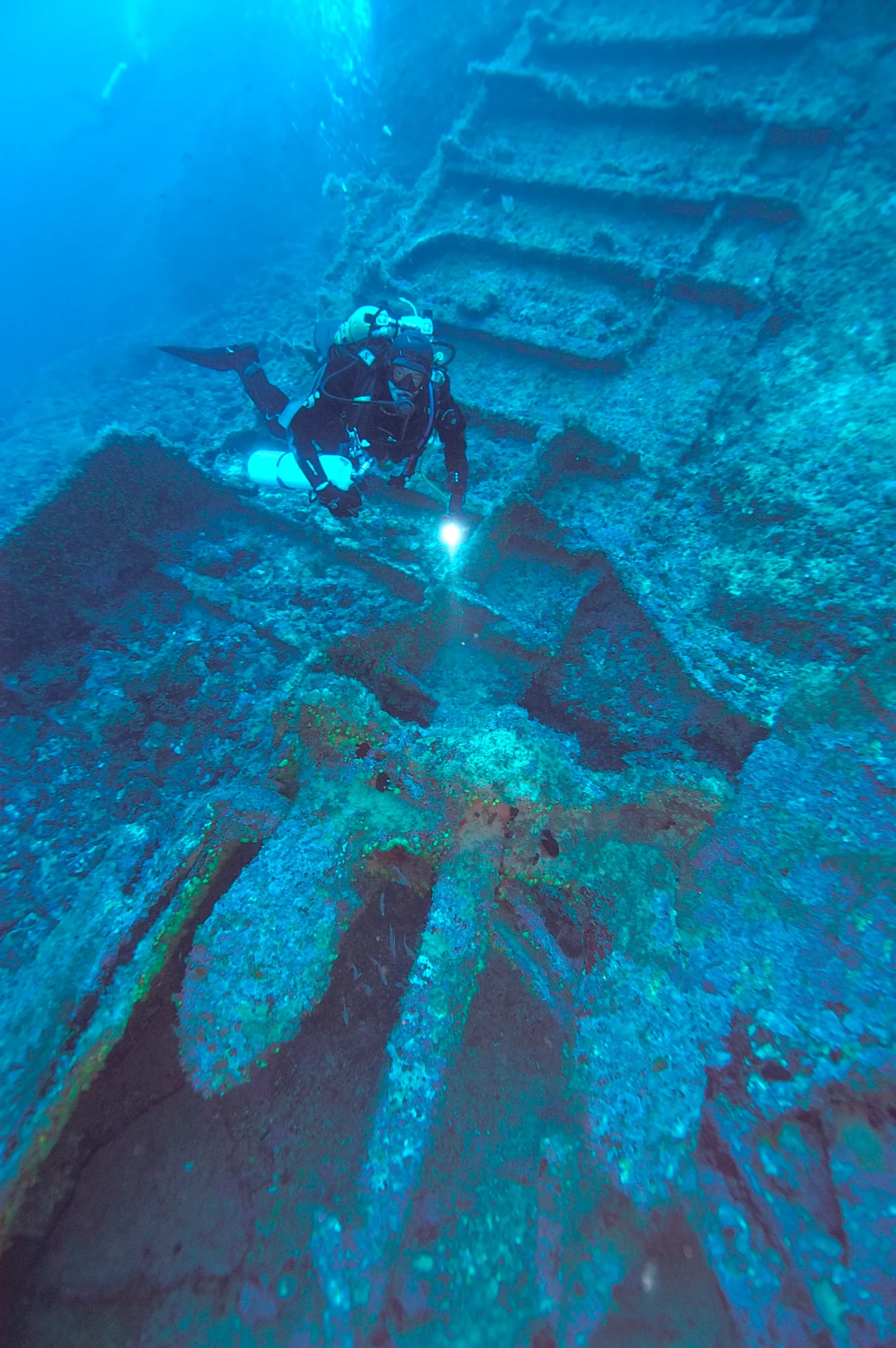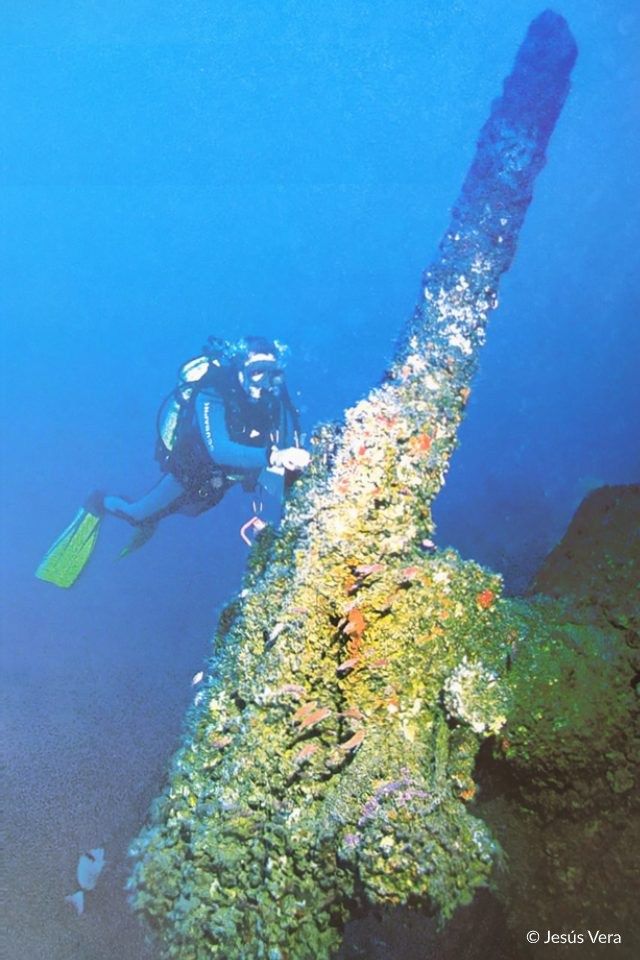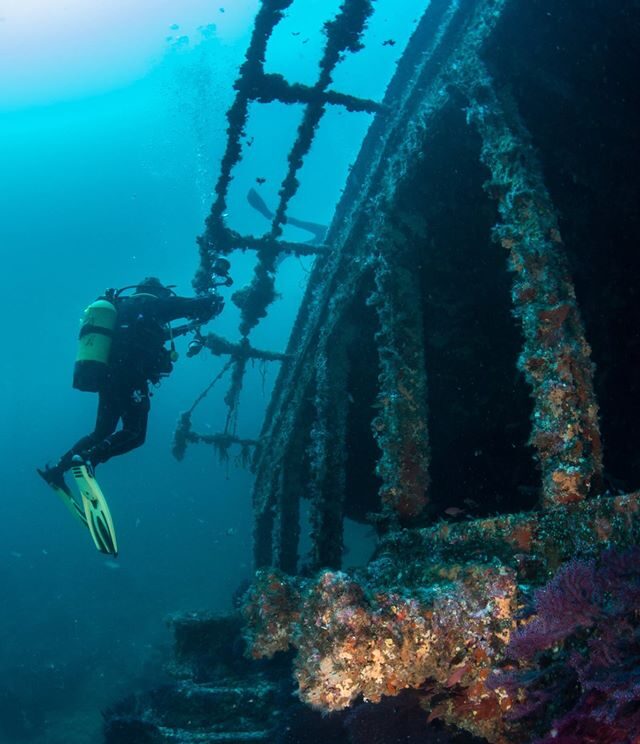The beauty of its underwater landscapes dotted with numerous shallows, the rich biodiversity of its flora and fauna populations, and the
spectacularity of the remains of shipwrecks, such as those of the Sirio, Minerva, and Nord América, make this area one of the most
emblematic environments in the Mediterranean for any underwater enthusiast.
Two miles from the coast, the Hormigas Islands form an extremely dangerous barrier to navigation. La Hormiga and El Hormigón are the only ones of these underwater mountains that emerge outside. The rest of its shallows remain underwater, sometimes only three meters from the surface, such as the feared Bajo de Fuera, a deadly trap for numerous large vessels.
These waters are home to one of the most important ship graveyards in the Mediterranean. More than 50 ships sank in these
waters. Some accidentally collided with the shallows, and others were victims of the relentless efficiency of German submarines during the first and second world wars. Gigantic steel structures that rest between 30 and 70 meters deep.



Naranjito, Carbonero, Sirio, Nord America, Minerva, Stanfield are some of the numerous wrecks in which we can dive.
The waters of Cabo de Palos were a strategic point for the traffic of allied ships that supplied food and weapons to their soldiers, so the Germans placed ships and submarines to block their passage and sink them.
One of those war vestiges is the Stanfield, an English merchant ship of 120 meters in length that remains in a navigation position at 63 m depth. Towards the bow, and on the starboard side, you can see the impact of the torpedo launched by a German submarine in the First World War. It is the best-preserved wreck and one of the most spectacular in the area.
The wrecked remains have been transformed into artificial reefs over time, being colonized by a blanket of algae and crustaceans. Among all these shipwrecks, the Sirio stands out for its legend and tragic history, the biggest accident of civil navigation that has occurred on the Spanish coasts. The Italian transatlantic liner sank in 1906 when it ran aground on the Bajo de Fuera, off Cabo de Palos.
Diving among the remains of the old transatlantic liner reveals the exceptional nature of our submerged spaces and helps to keep alive
Important episodes of our history


